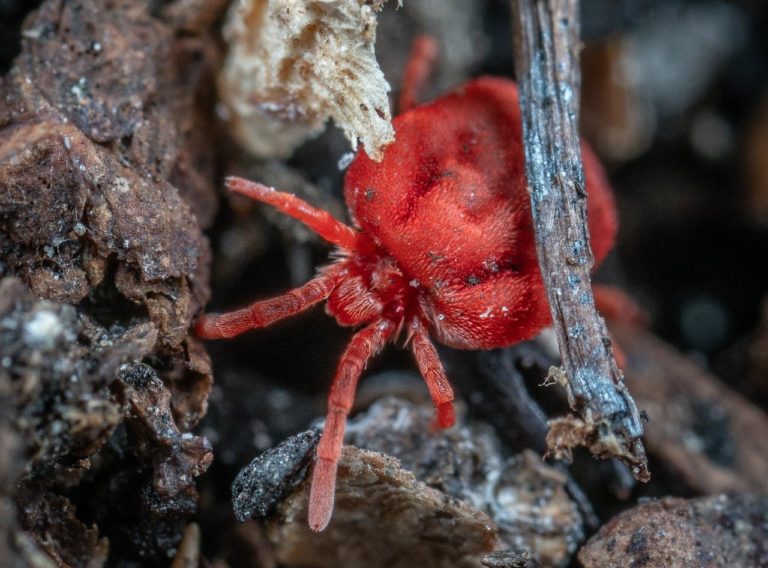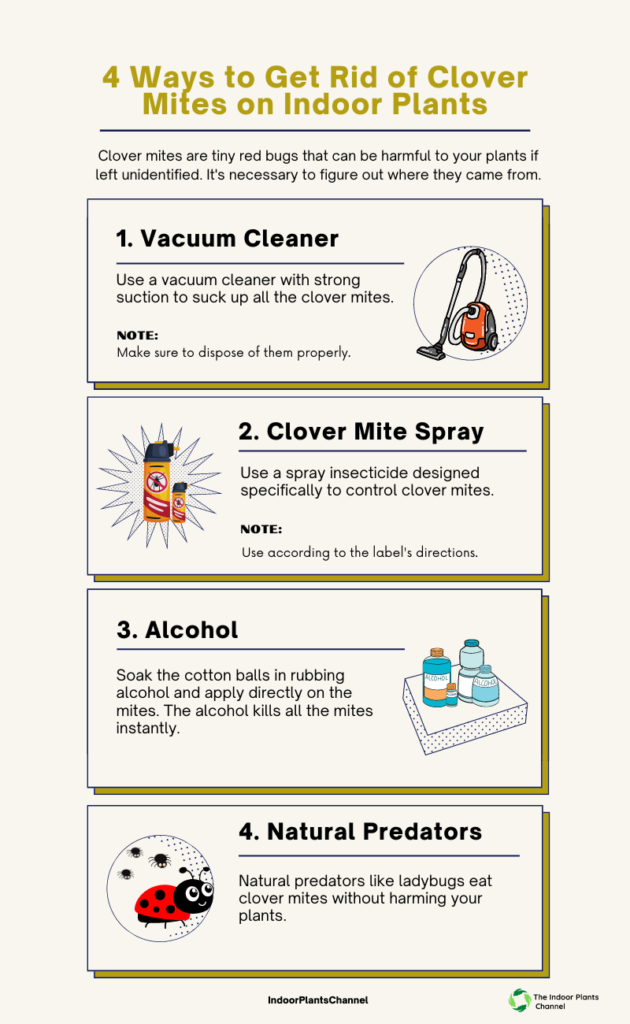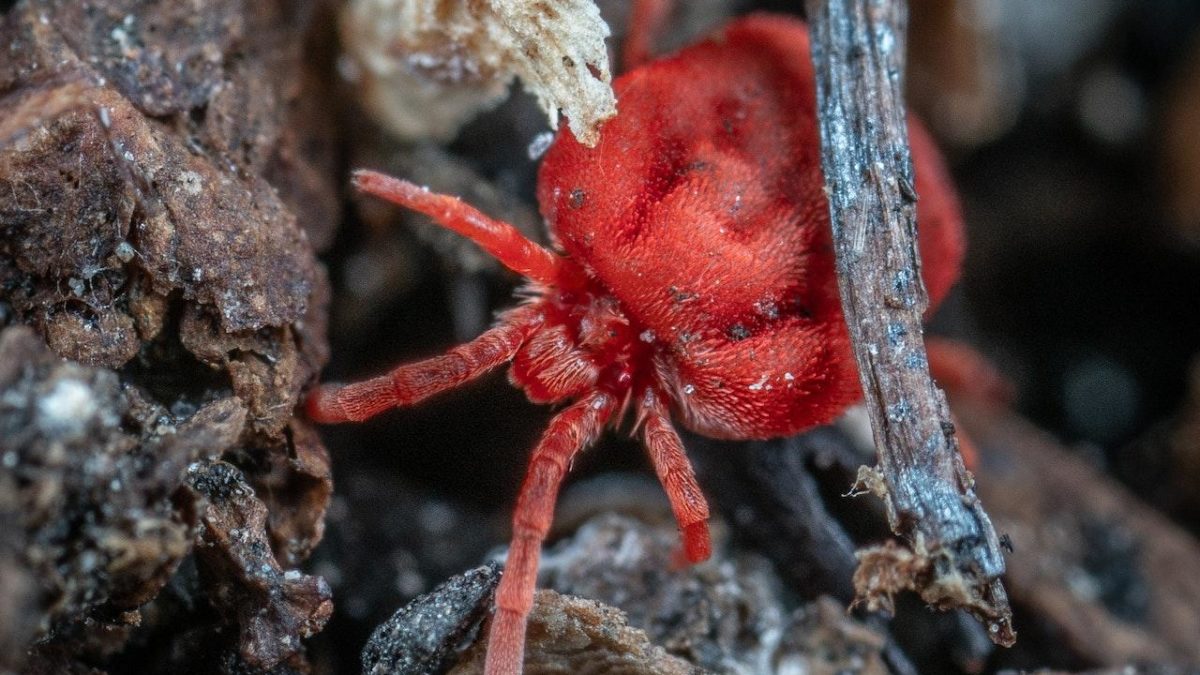If you’re struggling with clover mites, you’re not alone. In fact, these pests are a common problem for gardeners, and unfortunately, they can be quite difficult to get rid of. Clover mites are tiny red insects that often invade homes during the spring and fall. While they are not harmful to people, they can, however, be a nuisance.
Moreover, clover mites can also be harmful to plants. They suck the sap out of leaves, which, over time, can damage the plant. As a result, if you have clover mites in your home, it’s important to take immediate steps to get rid of them. Fortunately, there are several measures you can take to eliminate them and, at the same time, protect your plants. In this blog post, we’ll share some methods for getting rid of clover mites.
Clover Mites And Your Indoor Plants: What You Need To Know
Clover mites are small, red, spider-like creatures that often invade homes in large numbers. While they are not harmful to humans, they can cause serious damage to your indoor plants.

Credit: Pexels
Here are 5 things you need to know about clover mites and your indoor plants:
- Clover mites feed on plant sap, which can cause your plants to become sick or even die.
- Clover mites can lay up to 200 eggs at a time, so an infestation can quickly get out of control.
- They are often found in areas with high humidity, so keeping your indoor plants well-watered can help prevent an infestation.
- If you do find clover mites in your home, vacuuming them up is the best way to get rid of them.
- To prevent clover mites from returning, it’s essential to seal any cracks or crevices in your home’s foundation. In addition, pay attention to gaps around doors and windows, as these are common entry points. By addressing these areas, you can significantly reduce the chances of clover mites finding their way back into your home.
The Truth About Clover Mites And Indoor Plants
- Clover mites are tiny red bugs that feed on plants.
- They are often found in gardens and can be a nuisance to indoor plants. However, they are not harmful to humans or animals.
- Clover mites are exceptionally small, measuring only about 1/30 of an inch in length. Typically, they are red or reddish-brown in color and possess long, oval-shaped bodies. As a result, their tiny size can make them difficult to spot, but their distinctive red hue and shape are key indicators when identifying them.
- Clover mites are typically found in large numbers on plants, often congregating on the underside of leaves. As they feed by sucking the sap from the plants, this can lead to the leaves turning yellow or brown. Consequently, you may notice that the affected plants begin to show signs of stress, such as discoloration and weakened growth.
- Clover mites can be a problem for indoor plants because they can quickly multiply and become a nuisance.
They can also be difficult to control once they get inside your home. The best way to prevent problems with clover mites is to keep them from getting inside in the first place.
How To Tell If Your Indoor Plants Have Clover Mites
Look for the following signs to check if your plants have clover mites,
- First, look for small, reddish-brown bugs on the leaves or stems of the plant.
- Additionally, check for tiny, red eggs on the undersides of leaves.
- Furthermore, observe any white, web-like material on the leaves or stems of the plant.
- Moreover, keep an eye out for brown or red spots on the leaves of the plant.
- Finally, watch for wilting or dying leaves, which may indicate an infestation.
Are Clover Mites Bad For Your Indoor Plants?
Clover mites are not bad for your indoor plants. In fact, they can be beneficial as they help pollinate the flowers. However, if you have a lot of them, they can become a nuisance.
How To Get Rid Of Clover Mites On Your Indoor Plants
- The first step is to identify where the clover mites are coming from. They could be coming in through cracks in your walls or windows, or they could be hitchhiking on your clothes or pets.
Once you know where they’re coming from, you can take steps to seal up those openings and prevent them from getting in.

The Best Indoor Plants To Keep Clover Mites Away
There are a few indoor plants that are known to keep clover mites away. These include:
1. Citrus Plants
The strong citrus scent from leaves and peels naturally repels clover mites and other pests. These plants also freshen up indoor air and add a vibrant touch to your home. Keeping small citrus trees, such as lemon or orange, near windows can help prevent mite infestations.

2. Peppermint
The intense minty aroma of peppermint is highly effective in deterring clover mites. It also doubles as a great natural air freshener. Growing peppermint indoors in pots or using its essential oil can provide long-lasting pest protection while keeping your space smelling fresh.

3. Lavender
Lavender is known for its calming fragrance, lavender is also a natural insect repellent. Clover mites dislike the strong scent, making it a great addition to your home. Placing potted lavender near windows, doorways, or balconies can help keep mites and other pests from sneaking inside.

4. Cinnamon
The warm, spicy scent of cinnamon is not only pleasant but also a strong deterrent for clover mites. You can grow a cinnamon plant indoors or sprinkle ground cinnamon around windowsills and entry points for added protection. This makes an excellent, chemical-free way to keep pests at bay.

5. Bay leaves
The essential oils released by bay leaves act as a natural mite repellent. Placing bay leaves in cabinets, near windows, and around potential entry points can help prevent clover mites from spreading indoors. Additionally, dried bay leaves can be used in sachets for long-term pest control.

The Worst Indoor Plants For Clover Mites
There are a few indoor plants that are particularly attractive to clover mites. These plants should be avoided if you are trying to prevent an infestation.
These plants are all common in homes and gardens, so it is important to be aware of their attraction to clover mites. If you have any of these plants in your home, always check them for infestations.
If you find clover mites on any of these plants, it is best to dispose of them to prevent the infestation from spreading.
The worst plants for clover mites are:
- FicusTrees
- Ivy
- Palms
- Ferns
- Begonias
How To Prevent Clover Mites From Infesting Your Indoor Plants
Keep your plants well-watered.
Clover mites are attracted to dry plants. By keeping your plants well-watered, you make them less attractive to these pests.Keep your plants free of debris.
Debris provides a hiding place for clover mites. By keeping your plants clean, you make it harder for them to hide and breed.Inspect your plants regularly.
Check your plants regularly for signs of clover mite infestation. These include small brown dots on the leaves or stems and webbing around the plant.Treat infested plants immediately.
If you find clover mites on your plants, treat them immediately with an insecticide. Be sure to follow the instructions on the label carefully.Take preventive measures.
To prevent clover mites from infesting your plants in the first place, take preventive measures such as sealing cracks and crevices in your home and keeping your plants away from areas that are prone to infestation.
Bonus Tips
- Wash the plant with soap and water to get rid of the mites.
- Spray the plant with an insecticide labeled for use against mites.
- Isolate the plant from other plants to prevent the mites from spreading.
- Discard the plant if it is heavily infested with mites.
- Vacuum the clover mites with a strong vacuum cleaner.
- You can also use a diluted solution of water and dish soap to kill them.
Frequently Asked Questions
Q1: Are clover mites harmful to plants?
While clover mites are not typically deadly, they can harm plants by sucking the sap from the leaves, leading to discoloration and stunted growth. Large infestations may cause significant damage, making plants weak or unhealthy.
Q2: How can I tell if my plants have clover mites?
Look for small, reddish-brown insects on the leaves or stems. You may also see white webbing, tiny eggs on the undersides of leaves, or brown/red spots on the leaves, indicating mite damage.
Q3: What plants are most susceptible to clover mites?
Clover mites tend to infest plants like ferns, begonias, ficus trees, and ivy. These plants provide ideal conditions for mites to thrive, so keep a close eye on them for signs of infestation.
Q4: How can I prevent clover mites from entering my home?
To prevent clover mites from getting inside, seal cracks in windows, doors, and your home’s foundation. Additionally, keep your indoor plants clean and regularly check for signs of pests.
Q5: What natural methods can I use to get rid of clover mites?
Use a vacuum cleaner with strong suction to remove mites. You can also dab them with rubbing alcohol on a cotton ball or use natural predators like ladybugs, which will feed on the mites without harming your plants.
Conclusion
It’s crucial, therefore, to protect your plants from pests and diseases. Among these, clover mites are one of the numerous pests that you must safeguard your plants against. In fact, these pests can quickly damage your indoor plants, often beyond recognition, leading to significant grief and frustration. Consequently, taking prompt action is essential to ensure your plants remain healthy and vibrant.
However, we’ve compiled some beneficial tips that’ll aid you in eradicating clover mites. You can check the tips above and let us know your thoughts in the comment section.
Michelle Wilde
Related posts
![]()
About Michelle Wilde
Michelle Wilde is a stay-at-home mom and avid plant lover. Armed with a post-graduate degree in Computer Science (no kidding!), she loves researching plants and landscapes. When she is not caring for her 4 kids, she spends time on her passion for plants. She blogs at www.indoorplantschannel.com, the trusted source for indoor plants.
Learn more
Subscribe
* You will receive the latest posts and updates about indoor plants!
Search
Recent Posts
Categories
- Beginner Guides (10)
- FAQ (206)
- General (2)
- How-To Guides (212)
- Indoor Plants (214)
- Pest Management (2)
- Plant Problem Solutions (4)
- Seasonal Growing (2)
- Specialized Environments (2)
- Specific Plant Care (3)
- Technical Growing (2)
